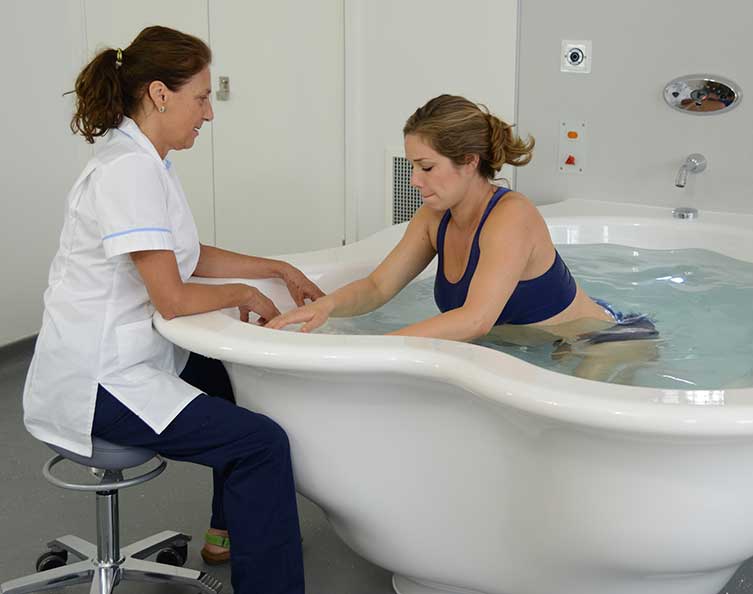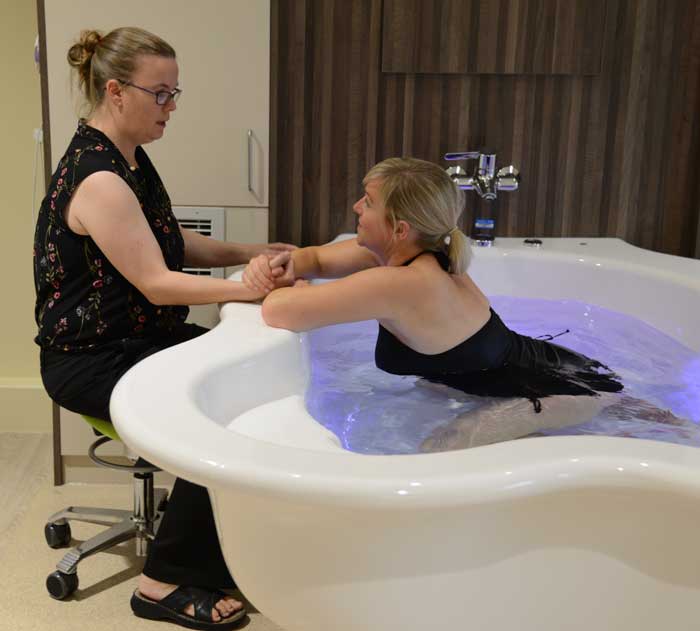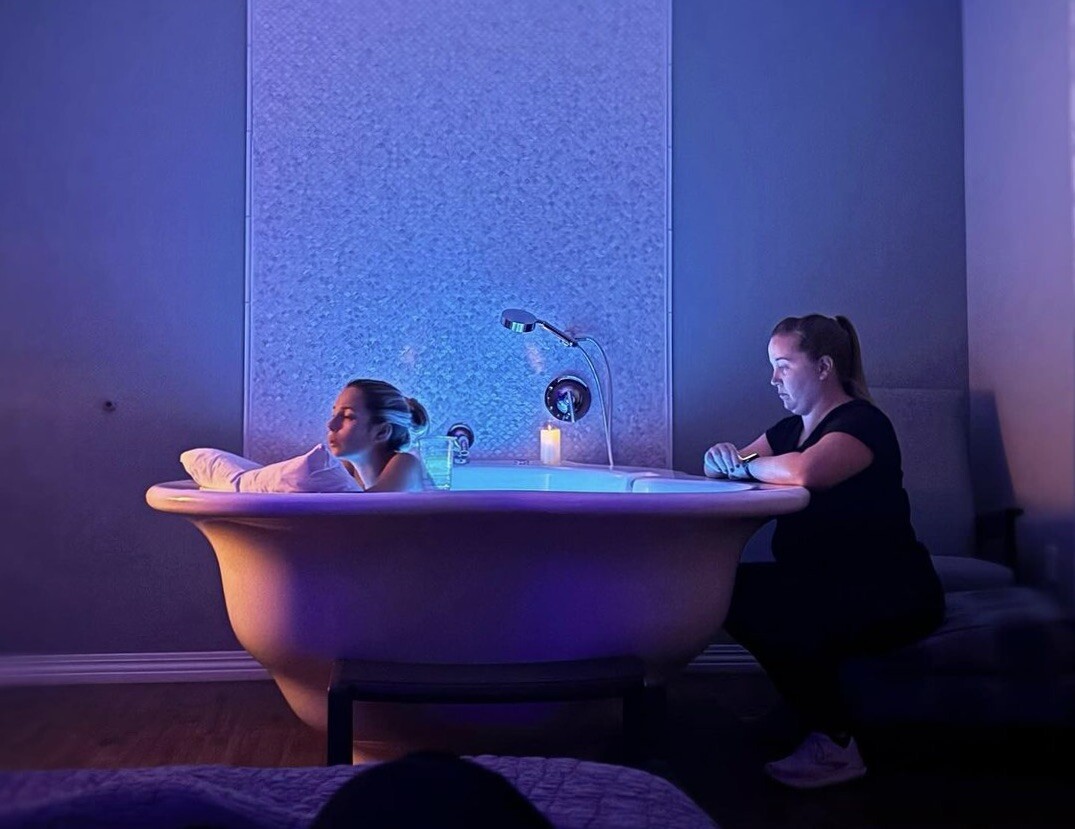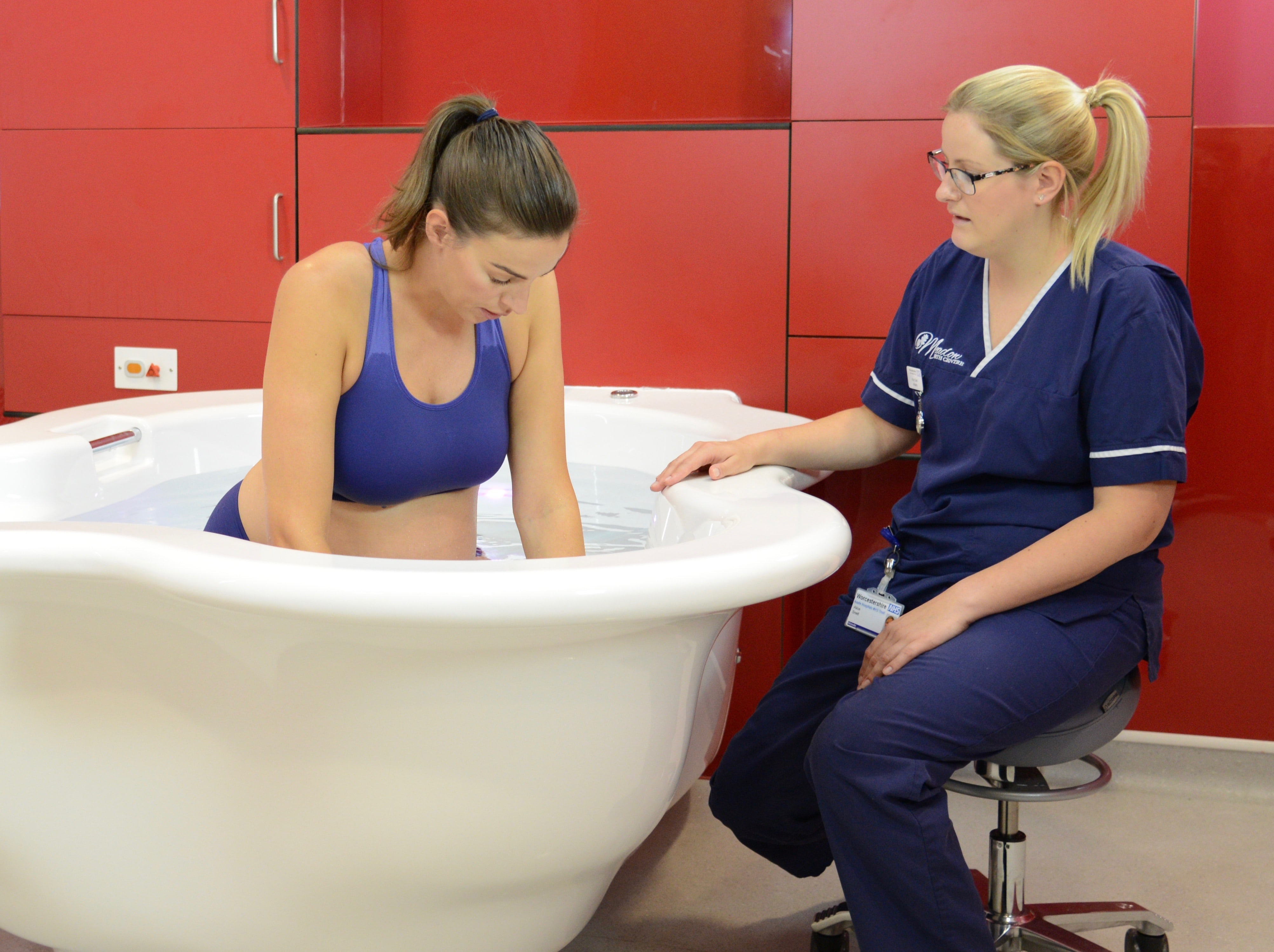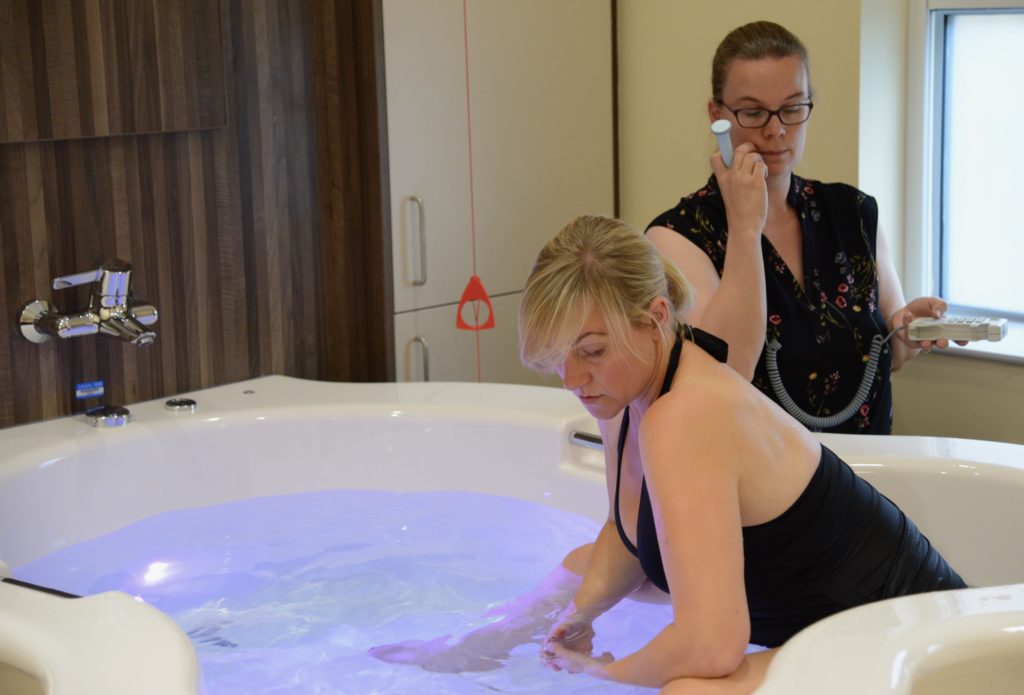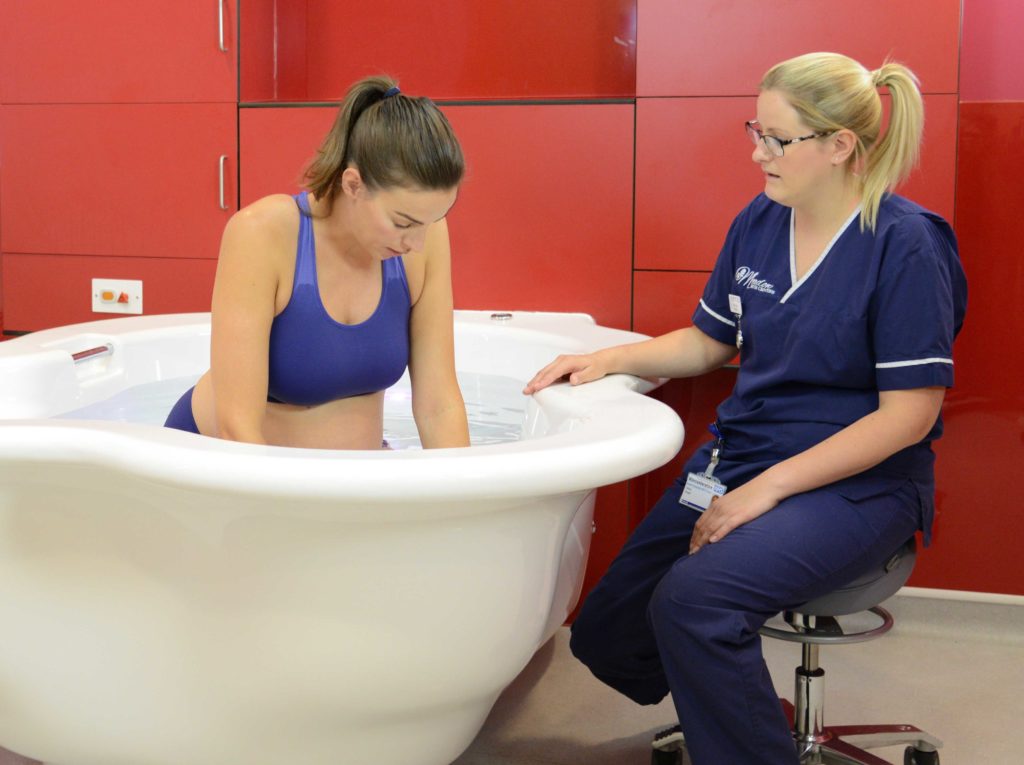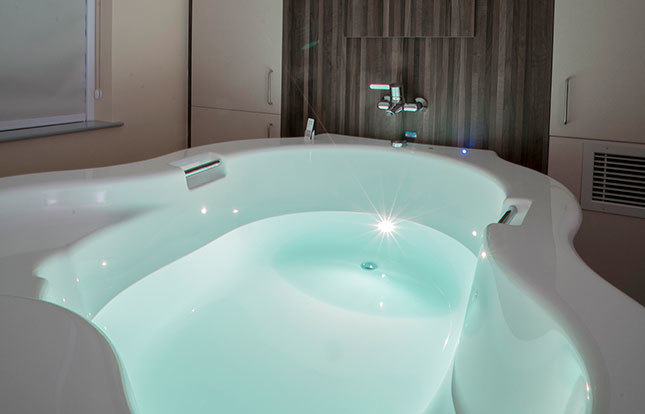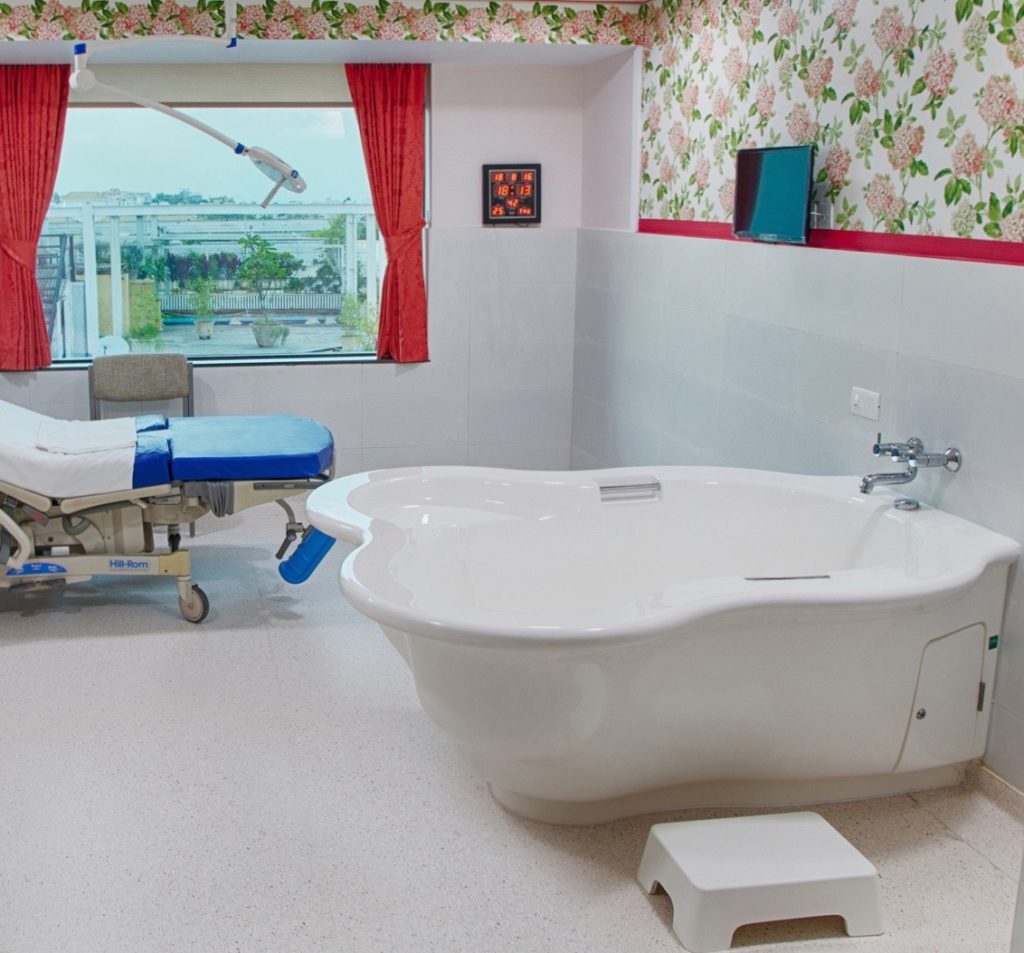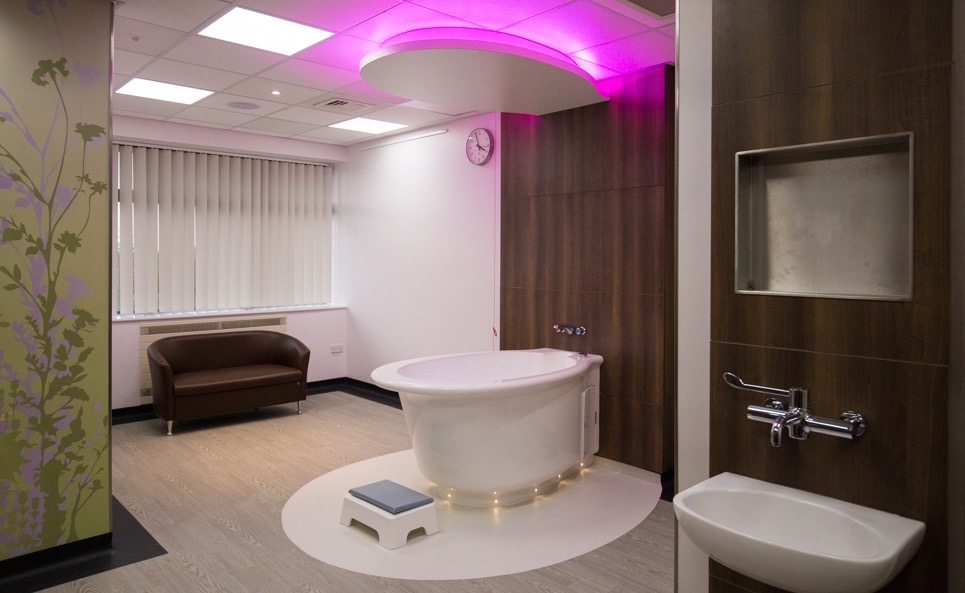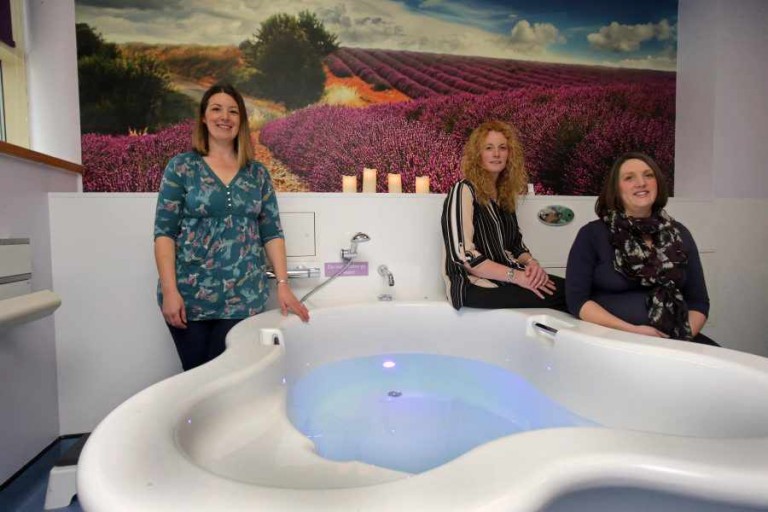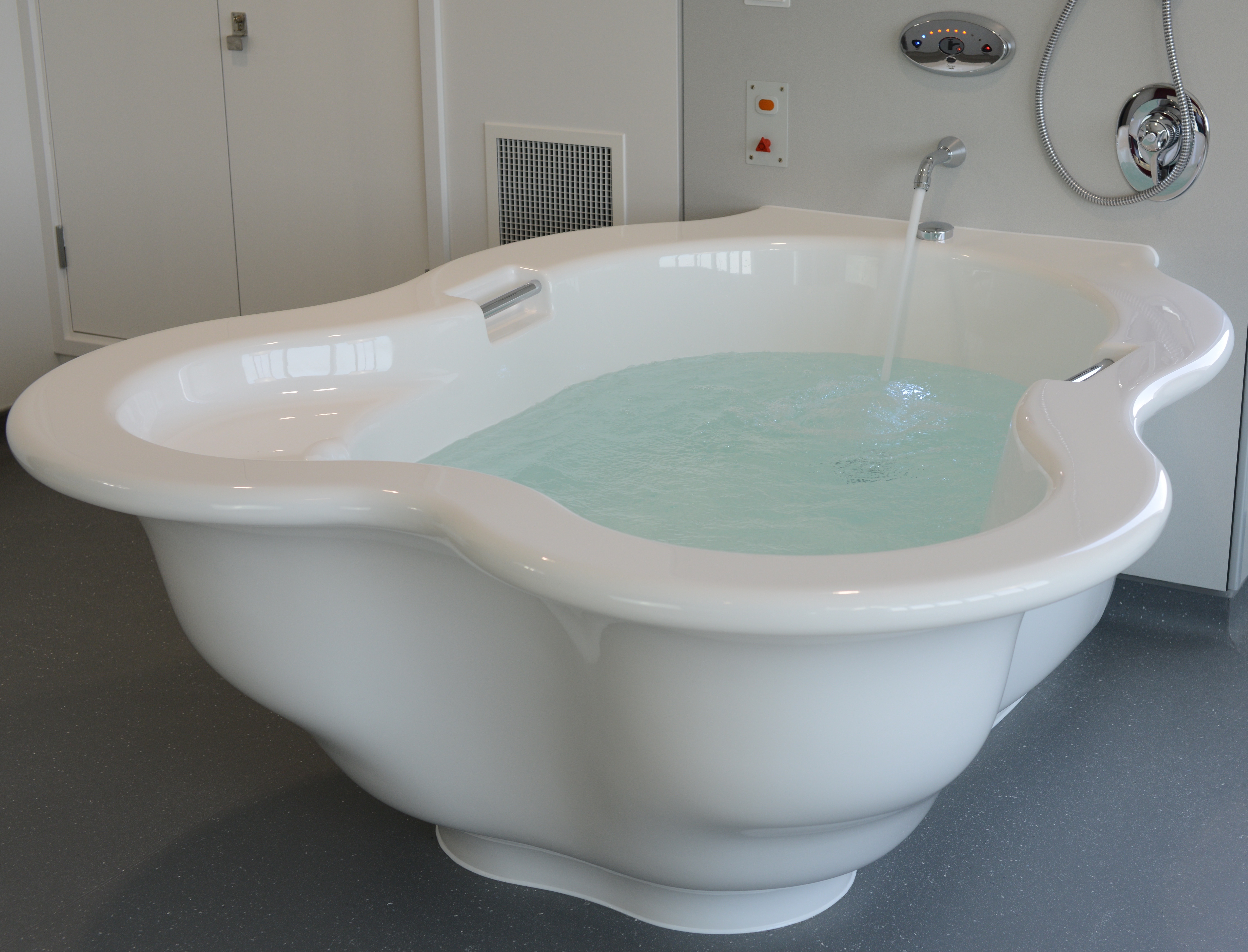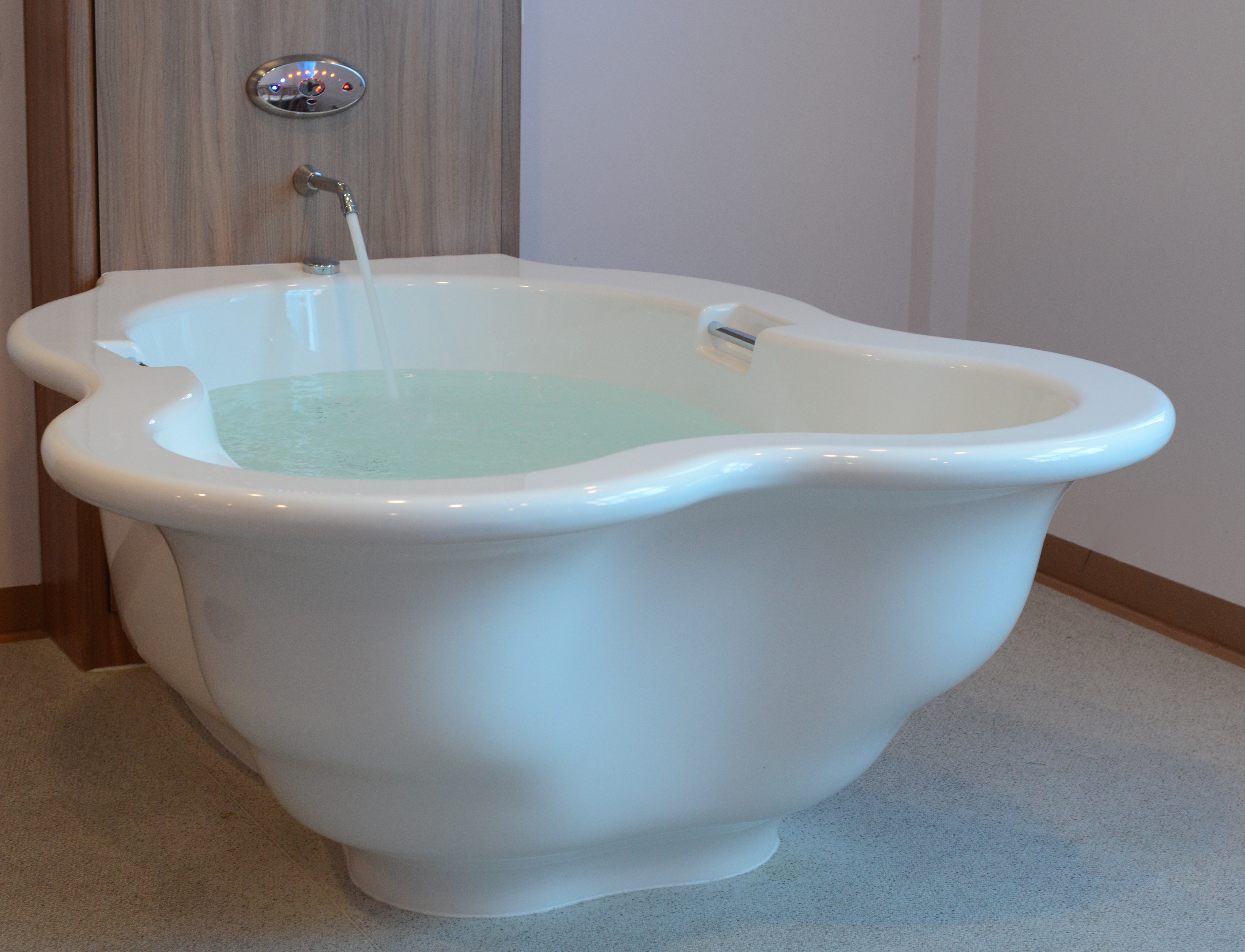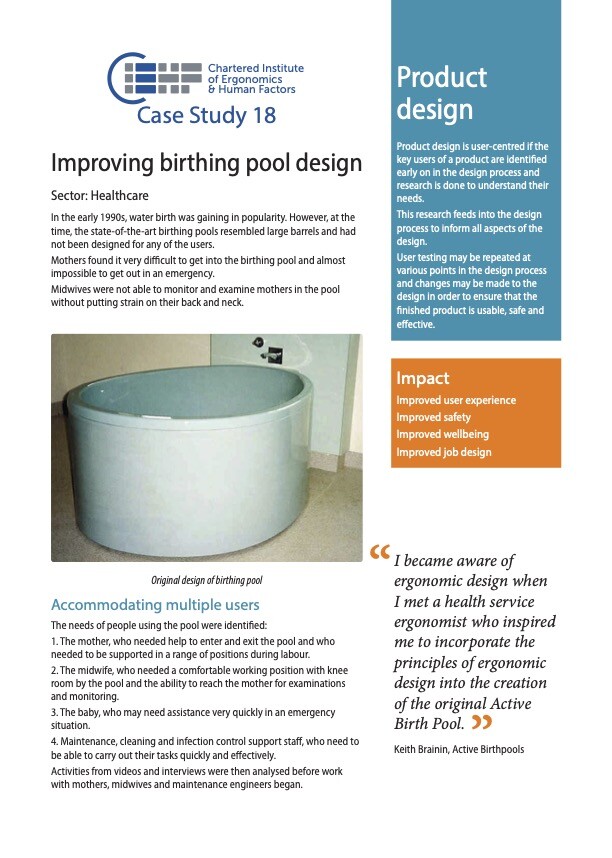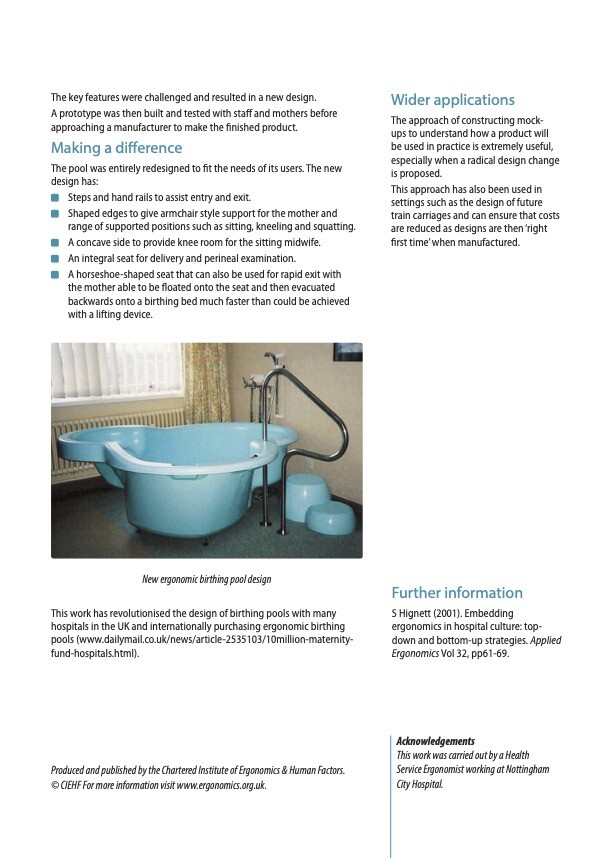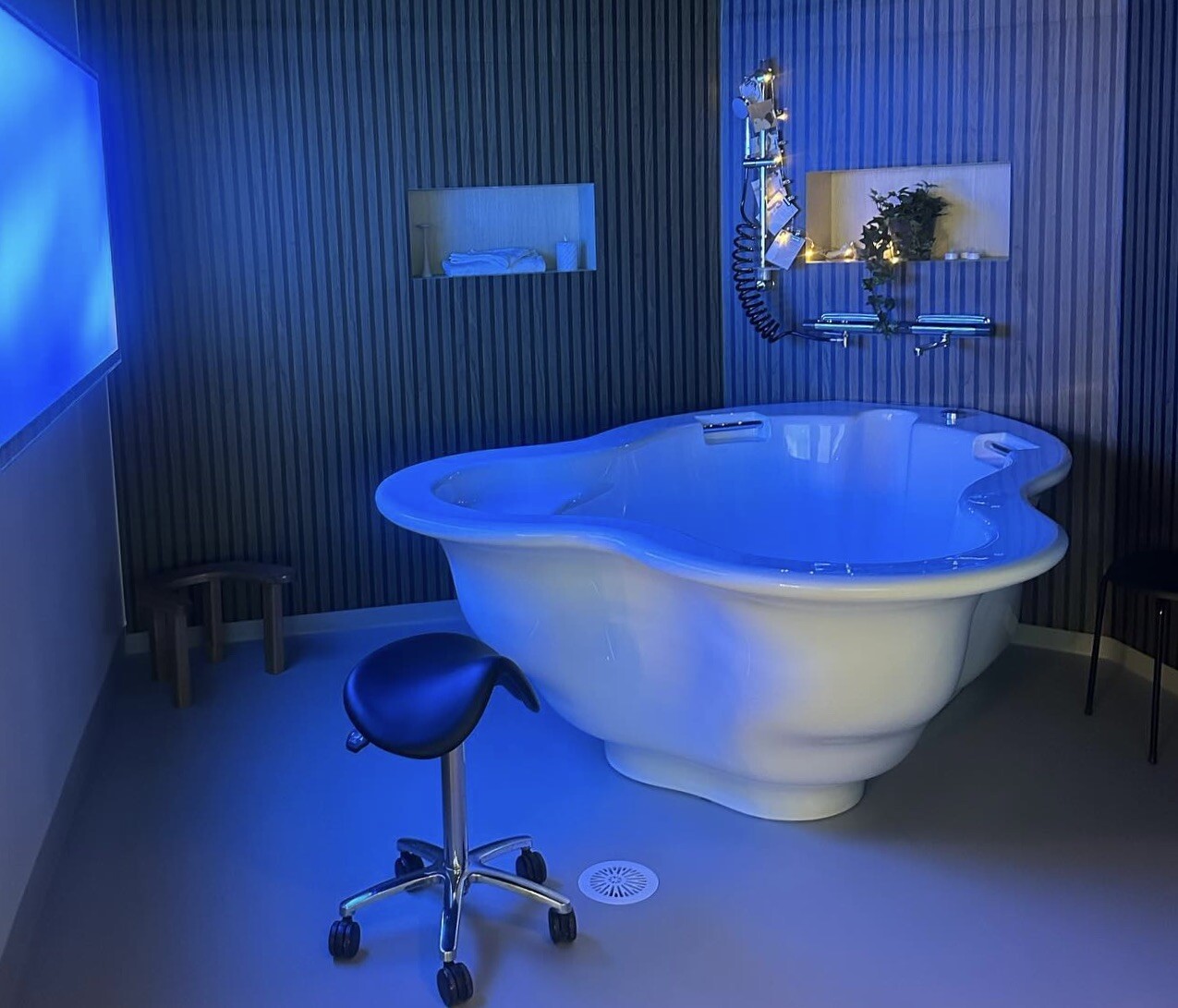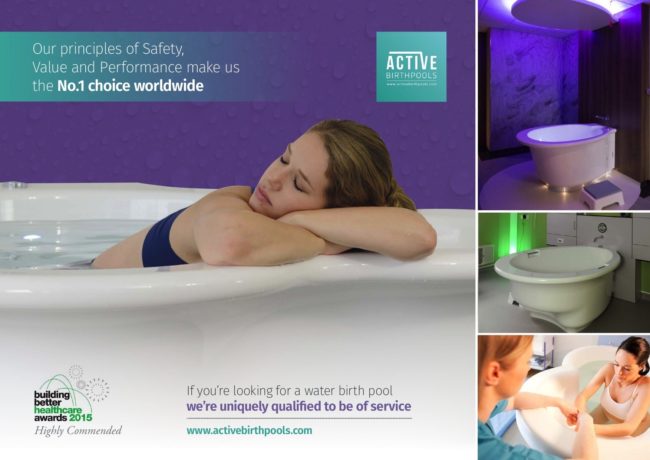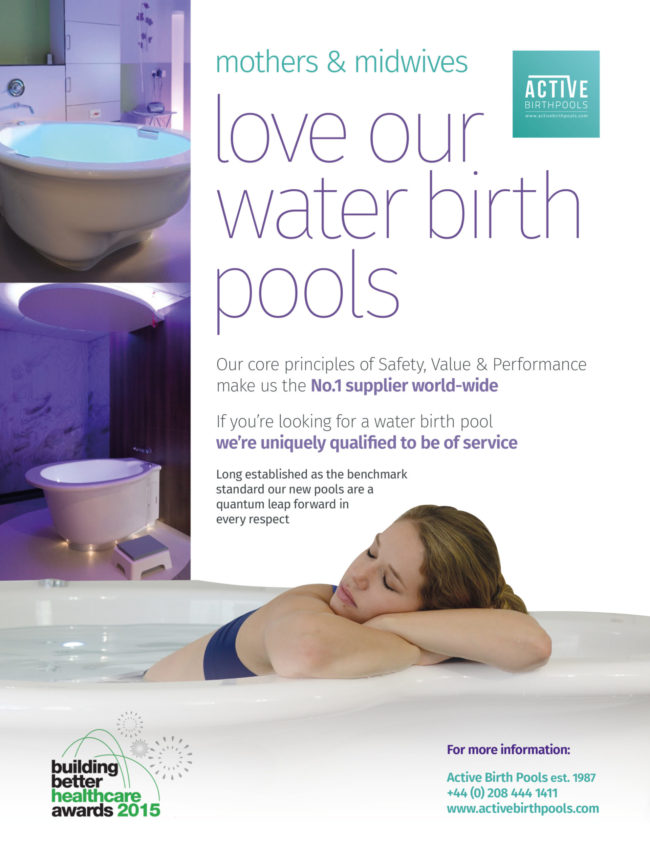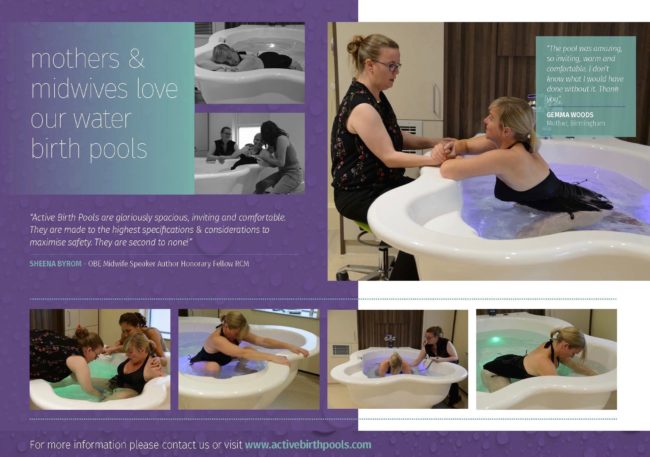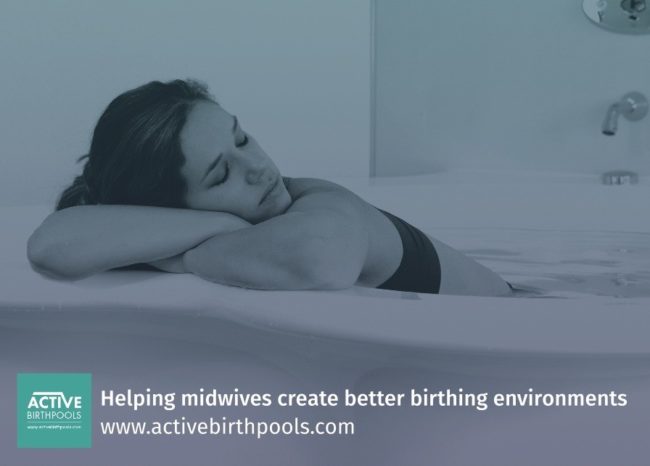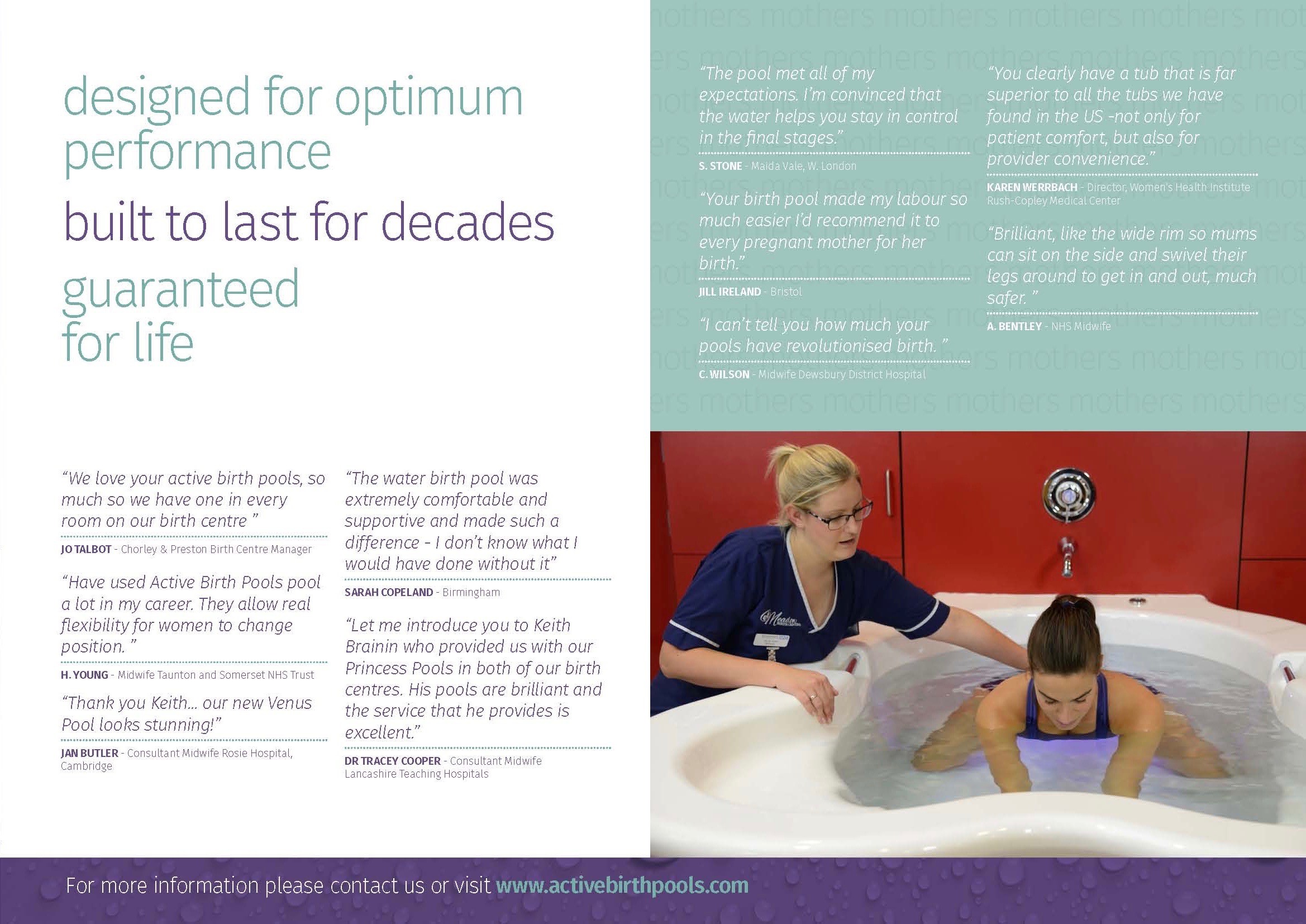Megan Cooper RM, BHSc (Honours), Jane Warland RM, PhD Helen McCutcheon RM, PhD.
Abstract
Water immersion for labour and birth is becoming an increasingly attractive option for women.
However, with what has been described as a paucity of research, water immersion policies appear to lack the evidence to ensure confidence in their use, safety in their implementation and importantly, acknowledgement of women’s autonomy to utilise water for labour and birth irrespective of their perceived ‘risk’.
In touching on the difficulties experienced by maternity care providers working within a system largely dominated by a ‘risk adverse’ paradigm, the following paper will highlight the shortfalls of research surrounding water immersion for labour and birth and the difficulties of utilising policies informed almost entirely by this research.
The current paucity of rigorous evidence and the difficulties faced by maternity care providers facilitating the option, highlights that greater emphasis needs to be placed on gaining a substantial evidence-base to inform future water immersion polices with more weight given to both observational data and anecdotal experience.
Future research should focus on both quantitative and qualitative aspects of water use for labour and birth to ensure that policies incorporate the required risk/benefit analysis, the opportunity for shared and informed decision-making and ultimately, the facilitation of woman-centred care.
Should we throw out the bath water?
For many women water immersion (WI) during labour and birth is an attractive and sought after option of care.
Despite the availability of literature surrounding WI for labour and birth many argue that high quality research with which to measure risks and benefits is still lacking.
As the option has become increasingly available, the development of policy to guide and inform care providers in the safe practice of WI for labour and birth has become necessary.
Consequently, policies appear to have been derived from what some describe as a less than substantive evidence-base (Cluett and Burns, 2009).
This has elicited debate as to whether the practice itself and therefore the policies currently informing the practice reflect the required foundational evidence to fulfill the ideal of evidence-based practice.
In touching on the current difficulties experienced by care providers working within in a ‘risk averse’ system the following paper will briefly explore WI for labour and birth, highlight the perceived shortfalls of research pertaining to its practice and discuss some of the difficulties of undertaking research at the level that many believe is required.
The role of qualitative research in informing the practice of labour and birth in water will also be examined with particular reference to the goal of woman-centred care and the need for policy that is reflective of a holistic evidence-base and supportive of women’s experience, satisfaction and choice.
The practice of water immersion for labour and birth
Despite common belief, WI for labour and birth is not a new phenomenon, with history dating back to the Egyptian Pharaohs and the Minoans of Crete (Mackey, 2001). In the 1960’s, Igor Charkovsky, a Russian midwife, began experimenting with the use of water for labour and birth after realising the positive physical and physiological effects of WI (Houston, 2010).
The 1980s saw Michel Odent, a well-known French Obstetrician and arguably the pioneer of modern water birth, establish the first birthing unit allowing women access to baths during labour, many of whom also went on to birth in water
(Houston, 2010). His observations and documented accounts of witnessing women immerse themselves in warm water allowed him to become a major influential figure in the global water birth movement and in the education of practitioners who facilitate the option of WI.
The advantages and benefits of WI during labour and birth have for the most part, not been thoroughly investigated through rigorous research.
Documented benefits include reductions in pharmacological pain relief (Eberhard et al., 2005, Otigbah et al., 2000, Benfield et al., 2001, Cluett and Burns, 2009), reduced blood loss and perineal trauma (Cluett and Burns, 2009) as well as facilitation of dysfunctional labour (Benfield et al., 2010, Cluett et al., 2004).
It has long been held that water immersion facilitates ‘normal’ birth and the latest prospective and descriptive cross sectional research findings provide support for this belief (Burns et al., 2012, Dahlen et al., 2012).
Burns et al. (2012) found that there was a higher frequency of spontaneous birth in nulliparas and greater rates of normal birth in both nulliparous and multiparous women when water was used during labour and/or birth. More specifically, of the 8924 participants almost 90 percent had a spontaneous birth and of these 5192 (58.3%) of women birthed in water.
Further support for benefits of water use come from Dahlen et al. (2012). They found in their Australian descriptive cross sectional study that women birthing in water had lower rates of major perineal trauma and PPH ≥ 500 milliliters when compared with those who used a birth stool on land.
Improved APGAR scores at five minutes were also noted for babies born into water compared to those whose mothers birthed in a semi-recumbent position on land although the authors note that they are unsure as to whether a semi- recumbent position was favoured by practitioners when there were fetal concerns, thereby potentially impacting on the results.
However, what is perhaps most important in terms of these findings is that there were no documented increased adverse outcomes for mothers who utiliszed water during labour and birth nor were there statistically significant increases in unfavourable outcomes for babies born into water.
Anecdotal experience supports these benefits further, with women suggesting greater levels of satisfaction, sense of autonomy and care providers observing less use of pharmacological pain relief and the facilitation of the fourth stage of labour, particularly in the initiation of breastfeeding.
Qualitative researchers have also found that women who birth in water feel protected, safe, relaxed and in control (Benfield et al., 2010, Maude and Foureur, 2007, Benfield, 2002).
For example, one New Zealand interpretive study, conducted by Maude and Foureur (2007), highlighted that WI provided a ‘sanctuary’ or environment whereby women felt protected and sheltered from intervention and interference. Participants also voiced a reduction in the fear of the birthing process and pain.
For many maternity care providers, water use for labour and birth is viewed as a method of providing women an alternative method of pain relief, ease of position changes and relaxation (Gilbert and Tookey, 1999, Meyer et al., 2010, Maude and Foureur, 2007, Woodward and Kelly, 2004, Stark and Miller, 2009).
Although evident throughout the literature, the observation and experience of maternity care providers is often challenged against minimal scientific proof, which to date, is still not entirely definitive.
Conversely, many continue to challenge the use of water for labour and birth claiming that it is neither normal nor natural for land living mammals to birth into water and that there exist too many associated ‘risks’ and adverse outcomes to mother and infant (Kassim et al., 2005, Mammas and Thiagarajan, 2009, Carpenter and Weston, 2011, Pinette et al., 2004).
The most recent published adverse outcomes pertaining to the use of water immersion during labour and birth come from Soileau et al. (2013) and Menakaya et al. (2012). Soileau et al. (2013) documents a neonatal infection and subsequent neonatal demise post a home water birth attributed to a maternal diarrheal infection in the week prior to birth. The infection believed to have been transmitted to the neonate after the mother defecated in the bath during labour.
This provides justification and support for the use of policy and/or guidelines in guiding practitioners in the facilitation of the option. Furthermore, its draws attention to the knowledge and understanding practitioners must attain in order to make decisions that ensure both maternal and neonatal wellbeing and safety when water is used.
Although Menakaya et al. (2012) did not assess maternal or neonatal infections in their retrospective design of 216 Australian women birthing in water, they noted that babies born into water showed a statistically significant difference in APGAR scores less than or equal to seven at one minute and as well as admission to Special Care Nursery (SCN) post birth in the water birth group.
Interestingly, three of the neonates transferred to SCN were admitted for feeding difficulties, issues which cannot be definitely linked to water immersion, one was admitted post a mild shoulder dystocia which presumably required the woman to be evacuated from the bath prior to birth and one for meconium aspiration, suggesting the presence of meconium which is commonly cited contraindication to birthing in water.
The remaining infants were admitted for resuscitation and an apneic event, which are also not unique to infants born in water.
One infant in the control group was admitted to the SCN and was transferred for respiratory distress requiring the longest stay of all infants admitted to the SCN. These findings are dissimilar to those of Mollamahmutoglu et al. (2012) who found no instance of neonatal infection and no significant difference in admission to the Neonatal Intensive Care Unit (NICU) when comparing infants who were born in water with those who were not. These findings are indicative of the inconsistent and contradictory findings pertaining to the use of water for labour and birth across the literature.
As a result, empirical research has failed to provide a definitive risk/benefit analysis relating to WI for labour and birth particularly in terms of maternal and neonatal infection, neonatal SCN/NICU admission, perineal trauma and the incidence of neonatal drowning and water embolism, as examples.
Furthermore, the ongoing reference to ‘potential’, ‘possible’ and ‘theoretical’ risks throughout the literature as well as throughout policy and guideline documents creates difficulty and uncertainty as to what actually constitutes risk and what is deemed as safe when WI is utilised for labour and/or birth (Kvach and Martonffy, 2012, Mackey, 2001, Pinette et al., 2004).
Watering down practice
Maternity care providers aim as far as possible, to deliver care which is women- centered (Carolan and Hodnett, 2007). Woman-centered care (WCC) incorporates the requirement of a woman making informed choices about all aspects of her care through the sharing of information (Leap, 2009).
Maternity care providers hold information that is vital to the woman but given the need to work within protocols and guidelines, may at times provide information to meet institutional and personal expectations and commitments resulting in what Carolan and Hodnett (2007) describe as “rule following and avoidance of responsibility”.
Although not necessarily a deliberate attempt to limit the information and options available to women, difficulties can arise as maternity care providers walk the fine line between meeting obligations as the woman’s advocate and the demands of institutional policies, guidelines and regulations.
Consequently care providers may forsake their role as the woman’s advocate, and instead support an environment that fosters informed compliance (Carolan and Hodnett, 2007).
Unfortunately the ideal of woman-centredness is often relinquished particularly as birth has become viewed a process that requires management and medical influence (Kitzinger, 2006, Davis-Floyd, 2001).
The burden of ‘proof’ and necessity of evidence to support or refute ‘alternative’ options irrespective of women’s requests and subjective knowingness that they work (Klein et al., 2006) has been significant in the debate surrounding water immersion for labour and birth.
Many of the benefits that water provides the labouring and birthing woman are also what may deter care providers from offering it as an option. Women and care providers alike, have suggested that water provides safety, sanctuary and distance from the rest of world allowing women a sense of control and ownership over their labour and birth (Maude and Foureur, 2007). However, this protection from intervention and intrusion
ultimately means that the contemporary methods of monitoring and gauging progress are no longer as accessible or practical. For many practitioners the inability to monitor and assess women as they normally would results in fear, not only of litigation and ‘what if’s’ (Garland, 1919), but also of the practice itself.
Combatting fear and anxiety could be as easy as encouraging care providers to witness women using water during labour and birth, but opinion and bias in disfavour of water immersion demands the current ‘gap’ in research be bridged.
Furthermore, ethical practice calls for practitioners to dissociate personal bias and views from their practice to ensure women’s autonomy and ability to exercise choice are not downplayed or absent in the facilitation of care (ANMC, 2008, ANMC et al., 2008).
This issue is further complicated by the political climate within which maternity care now exists. Despite many care providers supporting the implementation and practice of WI for labour and birth and having the capacity and accreditation to facilitate the practice, they may be restricted by the lack of institutional resources and support (Garland, 2011) and most commonly, policy that is derived from an aversion of risk and research that has yet to determine with any certainty the safety of using water for labour and birth.
WI for labour and birth, despite putting what feels like an ‘alternative’ slant on care, has the potential as a practice and option of care, to assist care providers such as midwives to re-recognize normal physiological birth and subsequently work towards fulfilling the ultimate goal of woman-centred care.
A drought of evidence?
Water birth, in particular, is frequently associated with perceived risks and dangers and for this reason its use continues to be challenged relative to safety implications for mother and infant as has previously been discussed (Pinette et al., 2004, Kvach and Martonffy, 2012).
The conundrum is yet to be resolved particularly given the perceived paucity of definitive evidence. Yet the option is becoming increasingly demanded and therefore available and as a result, policies are in place to guide care providers in its facilitation, which are probably based (at least in part) on this limited evidence.
Although a number of attempts have been made to undertake research at the ‘gold’ standard, randomised controlled trials (RCTs) examining WI for labour and birth have suffered from less than optimal sample sizes, selection bias or poorly controlled confounding factors in groups of low risk women who are usually highly passionate and motivated (Woodward and Kelly, 2004, Schroeter, 2004, Cluett and Burns, 2009).
This is evident in the latest Cochrane review that included only 12 suitable studies, and of these, only three examined the use of water during second stage of labour (Cluett and Burns, 2009). Further to this there is currently no population level data being collected anywhere in the world about outcomes of WI nor even how many women choose to use WI in labour and/or birth in water (Pinette et al., 2004).
Undertaking the recommended research on WI and birth particularly such as the RCT suggested by Davies (2010) is complicated given that randomising for such a study brings about ethical and moral concerns.
Hendrix et al. (2009) found this to be the case in their Dutch questionnaire-based study assessing women’s reasons for not participating in an RCT investigating home birth versus hospital birth. Eighty-four women indicated that they did not participate due to a concern that they would be randomised to the ‘wrong’ group.
Woodward and Kelly (2004) attempted to overcome women’s reluctance to participate in their pilot RCT comparing water birth with land birth by including a ‘preference arm’. Their results indicated there were no significant difference noted between women who were randomised and those who chose the ‘preference arm’ and therefore concluded that women would be happy to be randomised in future and similar trials.
However, criticism of this RCT highlights that their sample size was too small and therefore underpowered to determine safety, particularly given that only 10 women birthed in water. Further to this, Keirse (2005) challenges the validity and generalisability given the ‘preference arm’ and the bias that meant only 20 of the 60 women who had a strong preference for one of the two options, were allocated to their preferred option.
Subsequently, randomisation of women to options of care, which elicit both emotive and somewhat passionate views, such as the use of WI in labour and birth, is not ethically or practically feasible particularly where recruitment of large numbers would be required to determine with any certainty the morbidity and mortality of the intervention.
The proposed undertaking of this type of randomised research is further complicated by inconsistency across institutional policies in addition to funding, necessary infrastructure and available accredited staff (Garland, 2011).
Not only does this make it difficult to allow for the option and implementation of WI for labour and birth but it also inadvertently contributes to the lack of evidence in that accessibility is limited and therefore data on resulting outcomes, scarce. Furthermore, where it is consistently highlighted that high quality evidence is deficient, the question must be asked: who or what is informing the policies already in existence?
Initiating a wave of change
It is consistently highlighted that there is insufficient data to inform the practice of labour and birth in water, but is this really the case? It is clear that there is a paucity of evidence in terms of empirical investigation however volumes of anecdotal experience and observational data are available suggesting that water has significant and undeniable benefits to the women, and arguably to the baby.
Despite its availability, little weight is given to this valuable information, information that could be informing the movement forward and providing direction for future investigation of WI for labour and birth.
There is no denying that greater high level research would be advantageous to providing a definitive set of benefits and risks and therefore, greater insight into the relative safety of WI for labour and birth. However, is a RCT the right option?
The suggestion that rigorous evidence is needed to inform policies and guidelines with confidence and reliability could be attributed to what has been termed the ‘medicalisation’ of pregnancy and birth (Brubaker and Dillaway, 2009, Benoit et al., 2010) particularly where the measure of risk is at the forefront of maternity care facilitation.
However, in a risk-averse climate, adverse events whether recognised through well-constructed studies, auditing or anecdotal accounts, are generally the first to be documented so as to prompt review of practice.
Despite this, a search of the literature surrounding WI for labour and birth highlights very few documented adverse outcomes at any level of evidence and of those that are documented; the outcomes cannot always be definitively attributed to the use of water (Pinette et al., 2004, Cluett and Burns, 2009, Byard and Zuccollo, 2010).
What are readily available are anecdotal and observational accounts that suggest that WI has extensive benefits, not only to the woman but also to birth outcomes. It could therefore be argued that quantitative research alone is insufficient to provide answers to myriad of complexities, questions and queries relating to the practice of WI for labour and birth and therefore, insufficient when informing policies particularly where women choose to exercise self-determination and choice irrespective of their perceived risk.
Freeman and Griew (2007) touch on this in their review of one WI policy and its development. Their findings suggest that policy could further be enhanced by placing weight on the views and experiences of consumers and addressing the importance of informed and shared decision making.
This calls for attitudinal change not only to facilitate care that is woman-centred but also to ensure that women’s autonomy is factored into the development and implementation of policies underpinning practice.
The significance and value of qualitative evidence is slowly being realised, particularly in maternity care where WCC is the ideal. Despite this, empirical evidence is still commonly viewed as more rigorous and therefore more reliable.
This is none too clear in the hierarchies of evidence that fail to give weight to qualitative investigation (Spiby and Munro, 2009). However, as health care moves towards patient-centred models, or woman-centredness (Leap, 2009), as is the case in maternity care, there is the need for increasing weight to be also placed on experience and opinion particularly surrounding policy formation and care facilitation.
In light of this, a multi-faceted evidence-based approach to policy development and implementation of WI for labour and birth is likely to be advantageous.
However, before recommendations can be made, a critical analysis of existing policies and their development should occur in order to highlight whether the so-called scarcity of evidence poses difficulties for those involved in WI policy formation and to what extent policy facilitates and/or restricts water use practice and more importantly, women’s autonomy.
Pooling for the future
This paper has touched on the many shortfalls of WI research to date as well as foreseeable difficulties of future research surrounding WI for labour and birth. Future research requires greater emphasis on both the quantitative and qualitative aspects of water use for labour and birth to ensure that policies incorporate both the risk/benefit analysis as well as the opportunity for shared and informed decision-making.
This includes greater exploration of the experiences and perceptions of women and importantly, an examination of current WI policies to determine how they are informed and developed and to what extent they facilitate the practice and support women’s autonomy.
Not only is there the potential for this all-encompassing research to assist maternity care providers in working with autonomy as practitioners and ensuring their ability to advocate for women but there is also the potential for the use of water for labour and birth to have positive outcomes in a system that has an ever increasing rate of intervention and deviation from what can be both a normal and natural process.
References
ANMC 2008. Code of Professional Conduct for Midwives in Australia, Dickson, ANMC.
ANMC, ACM & ANF 2008. Code of Ethics for Midwives in Australia, Dickson, ANMC.
BENFIELD, R. 2002. Hydrotherapy in labor. J Nurs Scholarsh, 34, 347-52.
BENFIELD, R., HERMAN, J., KATZ, V. L., WILSON, S. P. & DAVIS, J. M. 2001. Hydrotherapy in labor. Research in Nursing & Health, 24, 57-67.
BENFIELD, R., HORTOBÁGYI, T., TANNER, C., SWANSON, M., HEITKEMPER, M. & NEWTON, E. 2010. The Effects of Hydrotherapy on Anxiety, Pain, Neuroendocrine Responses, and Contraction Dynamics During Labor. Biological Research for Nursing, 12, 28-36.
BENOIT, C., ZADOROZNYJ, M., HALLGRIMSDOTTIR, H., TRELOAR, A. & TAYLOR, K. 2010. Medical dominance and neoliberalisation in maternal care provision: The evidence from Canada and Australia. Social science & medicine, 71, 475-481.
BRUBAKER, S. J. & DILLAWAY, H. E. 2009. Medicalization, natural childbirth and birthing experiences.Sociology Compass, 3, 31-48.
BURNS, E. E., BOULTON, M. G., CLUETT, E., CORNELIUS, V. R. & SMITH, L. A. 2012. Characteristics,Interventions, and Outcomes of Women Who Used a Birthing Pool: A Prospective Observational Study. Birth.
BYARD, R. W. & ZUCCOLLO, J. M. 2010. Forensic issues in cases of water birth fatalities. Am J Forensic Med Pathol, 31, 258-60.
CAROLAN, M. & HODNETT, E. 2007. ‘With woman’ philosophy: examining the evidence, answering the questions. Nursing Inquiry, 14, 140-52.
CARPENTER, L. & WESTON, P. 2011. Neonatal respiratory consequences from water birth. J Paediatr Child Health.
CLUETT, E. & BURNS, E. 2009. Immersion in water in labour and birth. Cochrane Database Syst Rev, CD000111.
CLUETT, E., PICKERING, R., GETLIFFE, K. & SAUNDERS, N. 2004. Randomised controlled trial of labouring in water compared with standard of augmentation for management of dystocia in first stage of labour. BMJ, 328, 314.
DAHLEN, H. G., DOWLING, H., TRACY, M., SCHMIED, V. & TRACY, S. 2012. Maternal and perinatal outcomes amongst low risk women giving birth in water compared to six birth positions on land. A descriptive cross sectional study in a birth centre over 12 years. Midwifery.
DAVIES, M. 2010. Water births and the research required to assess the benefits versus the harms. Journal of Paediatrics and Child Health.
DAVIS-FLOYD, R. 2001. The technocratic, humanistic, and holistic paradigms of childbirth. International Journal of Gynecology & Obstetrics, 75, S5-S23.
EBERHARD, J., STEIN, S. & GEISSBUEHLER, V. 2005. Experience of pain and analgesia with water and land births. Journal of Psychosomatic Obstetrics and Gynecology, 26, 127-133.
FREEMAN, L. M. & GRIEW, K. 2007. Enhancing the midwife-woman relationship through shared decision making and clinical guidelines. Women Birth, 20, 11-5.
GARLAND, D. 1919. Waterbirth: An attitude to care, Books for Midwives Pr.
GARLAND, D. 2011. Water birth: a way of enhancing and promoting normality. Promoting Normal Birth:Research, Reflections and Guidelines. 1st ed.: Fresh Heart Publishing.
GILBERT, R. E. & TOOKEY, P. A. 1999. Perinatal mortality and morbidity among babies delivered in water:surveillance study and postal survey. BMJ, 319, 483-7.
HENDRIX, M., VAN HORCK, M., MORETA, D., NIEMAN, F., NIEUWENHUIJZE, M., SEVERENS, J. & NIJHUIS, J. 2009. Why women do not accept randomisation for place of birth: feasibility of a RCT in The Netherlands. BJOG, 116, 537-42; discussion 542-4.
HOUSTON, J. 2010. Exploring the theories around use of water for labour and for birth. MIDIRS Midwifery Digest, 20, 343-347.
KASSIM, Z., SELLARS, M. & GREENOUGH, A. 2005. Underwater birth and neonatal respiratory distress. BMJ, 330, 1071-2.
KEIRSE, M. J. 2005. Challenging water birth — how wet can it get? Birth, 32, 318-22.
KITZINGER, S. 2006. Birth crisis, Routledge.
KLEIN, M. C., SAKALA, C., SIMKIN, P., DAVIS‐FLOYD, R., ROOKS, J. P. & PINCUS, J. 2006. Why do women go along with this stuff? Birth, 33, 245-250.
KVACH, E. & MARTONFFY, A. I. 2012. Are there any risks to a water birth?
LEAP, N. 2009. Woman-centred or women-centred care: does it matter? British Journal of Midwifery, 17, 12-16.
MACKEY, M. M. 2001. Use of water in labor and birth. Clin Obstet Gynecol, 44, 733-49.
MAMMAS, I. N. & THIAGARAJAN, P. 2009. Water aspiration syndrome at birth – report of two cases. J Matern Fetal Neonatal Med, 22, 365-7.
MAUDE, R. M. & FOUREUR, M. J. 2007. It’s beyond water: Stories of women’s experience of using water for labour and birth. Women and Birth, 20, 17-24.
MENAKAYA, U., ALBAYATI, S., VELLA, E., FENWICK, J. & ANGSTETRA, D. 2012. A retrospective comparison of water birth and conventional vaginal birth among women deemed to be low risk in a secondary level hospital in Australia. Women Birth.
MEYER, S. L., WEIBLE, C. M. & WOEBER, K. 2010. Perceptions and practice of waterbirth: a survey of Georgia midwives. J Midwifery Womens Health, 55, 55-9.
MOLLAMAHMUTOĞLU, L., MORALOĞLU, Ö., ÖZYER, Ş., SU, F. A., KARAYALÇıN, R., HANÇERLIOĞLU, N.,
UZUNLAR, Ö. & DILMEN, U. 2012. The effects of immersion in water on labor, birth and newborn and comparison with epidural analgesia and conventional vaginal delivery. Journal of The Turkish German Gynecological Association, 13, 45-9.
OTIGBAH, C. M., DHANJAL, M. K., HARMSWORTH, G. & CHARD, T. 2000. A retrospective comparison of water births and conventional vaginal deliveries. Eur J Obstet Gynecol Reprod Biol, 91, 15-20.
PINETTE, M. G., WAX, J. & WILSON, E. 2004. The risks of underwater birth. Am J Obstet Gynecol, 190, 1211-5.
SCHROETER, K. 2004. Water births: a naked emperor. Pediatrics, 114, 855-8.
SOILEAU, S. L., SCHNEIDER, E., ERDMAN, D. D., LU, X., RYAN, W. D. & MCADAMS, R. M. 2013. Case report: Severe disseminated adenovirus infection in a neonate following water birth delivery. J Med Virol, 85, 667-9.
SPIBY, H. & MUNRO, J. 2009. The development and peer review of evidence-based guidelines to support midwifery led care in labour. Midwifery, 25, 163-71.
STARK, M. A. & MILLER, M. G. 2009. Barriers to the use of hydrotherapy in labor. JOGNN: Journal of Obstetric, Gynecologic & Neonatal Nursing, 38, 667-675.
WOODWARD, J. & KELLY, S. M. 2004. A pilot study for a randomised controlled trial of water birth versus land birth. BJOG: An International Journal of Obstetrics and Gynaecology, 111, 537-545.
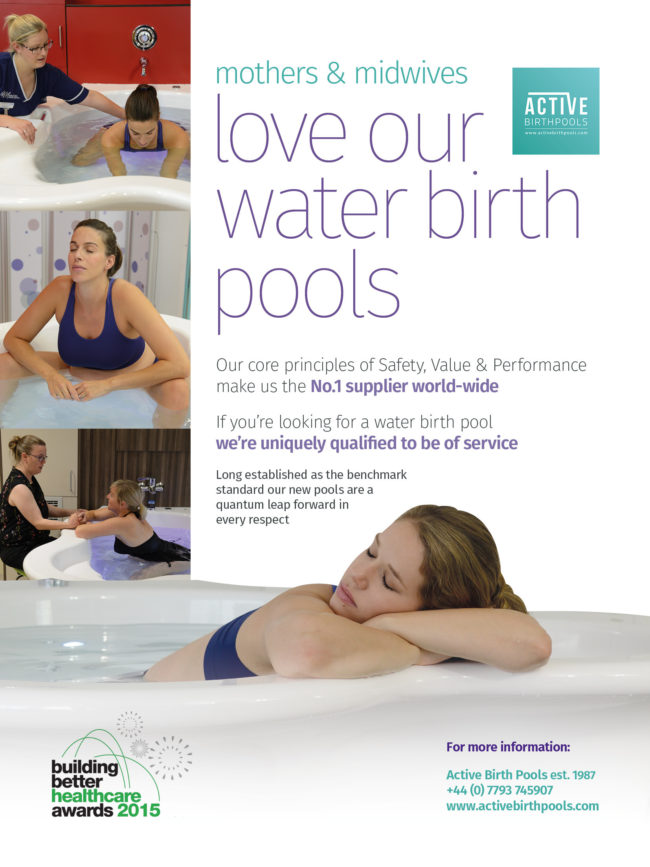
SaveSave
SaveSave

